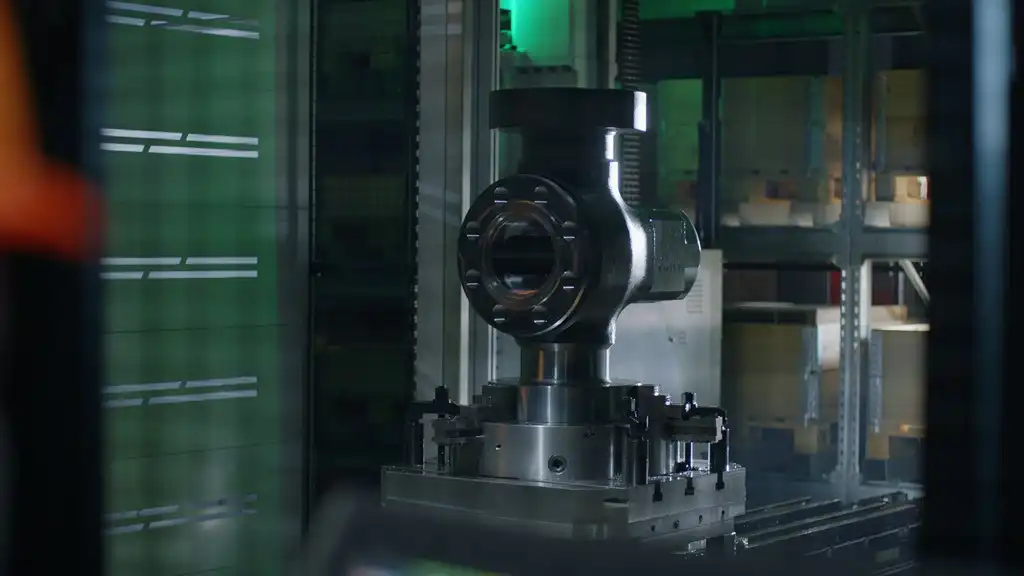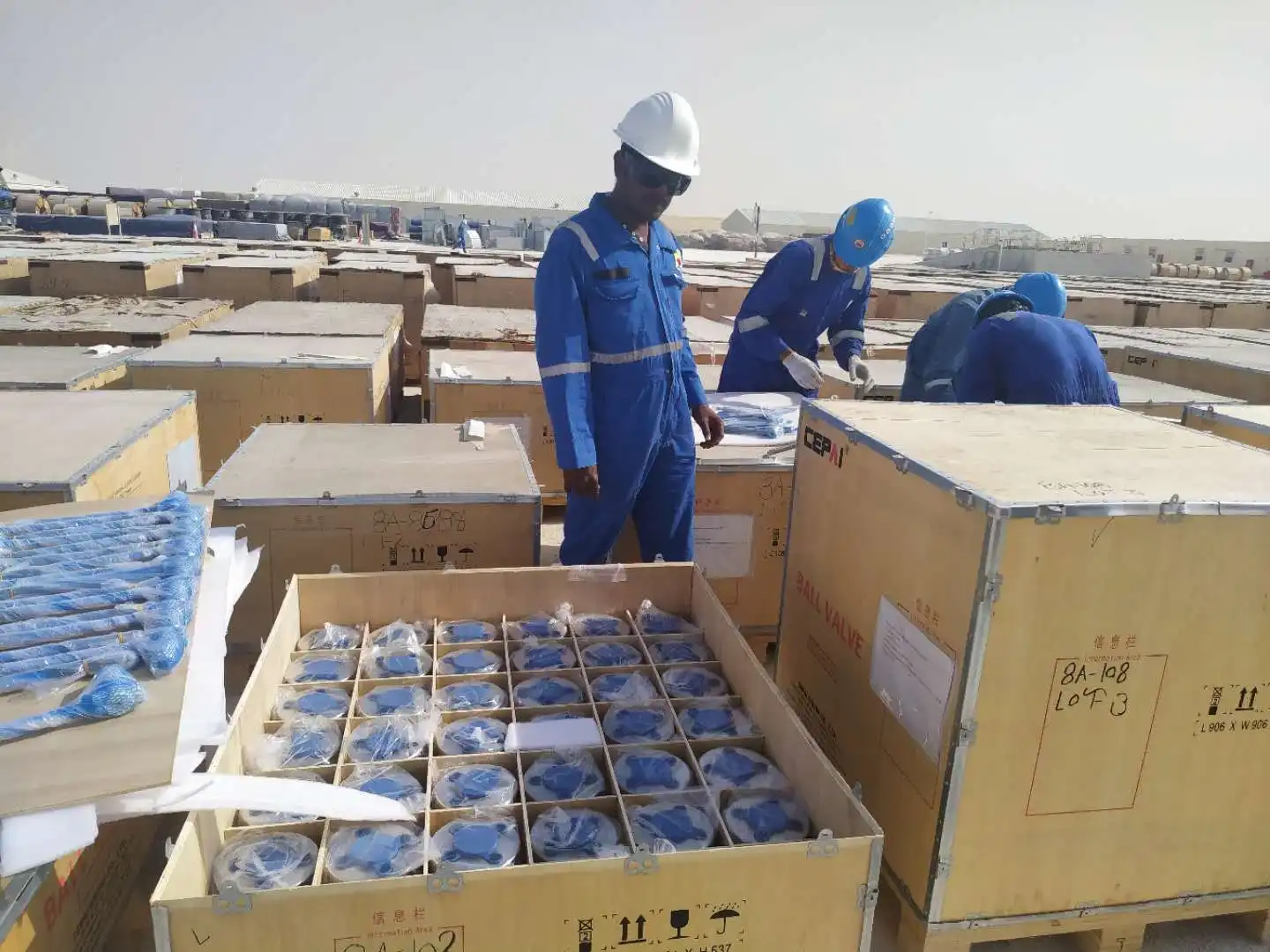How to Calculate Flow Coefficient (Cv) for Industrial Ball Valves?
Calculating the flow coefficient (Cv) for industrial ball valves is a crucial step in ensuring optimal performance and efficiency in fluid control systems. The Cv value represents the flow capacity of a valve, indicating the volume of water that can pass through the valve in one minute at a pressure drop of 1 psi. To determine the Cv for industrial ball valves, you'll need to consider factors such as valve size, pressure drop, fluid density, and flow rate. The general formula for calculating Cv is: Cv = Q / (N × √(ΔP/G)), where Q is the flow rate, N is a numerical constant, ΔP is the pressure drop, and G is the specific gravity of the fluid. By accurately calculating the Cv, engineers and technicians can select the most appropriate ball valve for their specific application, ensuring optimal flow control and system efficiency.

Understanding Flow Coefficient (Cv) in Ball Valve Applications
Definition and Importance of Flow Coefficient
The flow coefficient, commonly denoted as Cv, is a vital parameter in valve selection and sizing. It quantifies the efficiency of a valve in allowing fluid flow under specific conditions. For ball valves, understanding Cv is crucial as it directly impacts system performance and energy efficiency. A higher Cv value indicates a valve's ability to handle larger flow rates with minimal pressure drop, making it an essential consideration for engineers and system designers.
Factors Affecting Flow Coefficient in Ball Valves
Several factors influence the flow coefficient of ball valves. The valve's internal geometry, including the size and shape of the ball and the flow path, plays a significant role. The valve's opening percentage also affects Cv, with fully open valves typically offering the highest flow capacity. Additionally, fluid properties such as viscosity and density can impact the Cv value. Understanding these factors is essential for accurate Cv calculations and optimal valve selection.
Relationship Between Cv and Valve Size
There's a direct correlation between valve size and Cv values. Generally, larger ball valves have higher Cv values, allowing for greater flow rates. However, this relationship isn't always linear, as other design factors can influence flow characteristics. Engineers must consider both the valve size and its corresponding Cv to ensure proper sizing for specific applications. This relationship highlights the importance of accurate Cv calculations in selecting the most suitable ball valve for a given system.
Step-by-Step Guide to Calculating Cv for Industrial Ball Valves
Gathering Necessary Data for Cv Calculation
Before calculating the Cv for industrial ball valves, it's essential to gather accurate data. This includes the system's flow rate requirements, operating pressure conditions, and fluid properties. Measure or estimate the pressure drop across the valve under normal operating conditions. Determine the specific gravity of the fluid being controlled. For water-like fluids at standard conditions, the specific gravity is typically 1.0. Collect information on the valve's size and any manufacturer-provided Cv data for reference.
Applying the Cv Formula for Ball Valves
With the necessary data in hand, apply the Cv formula: Cv = Q / (N × √(ΔP/G)). Here, Q represents the flow rate in gallons per minute (gpm), N is a numerical constant (typically 1 for water-like fluids), ΔP is the pressure drop across the valve in psi, and G is the specific gravity of the fluid. For example, if you have a flow rate of 100 gpm, a pressure drop of 2 psi, and a specific gravity of 1.0, the calculation would be: Cv = 100 / (1 × √(2/1)) = 70.7. This result indicates the required Cv for the ball valve under these specific conditions.
Interpreting Cv Results for Valve Selection
After calculating the Cv, interpret the results to select the appropriate ball valve. Compare the calculated Cv with manufacturer-provided Cv values for different valve sizes and models. Choose a valve with a Cv rating slightly higher than your calculated value to ensure adequate flow capacity. Consider factors such as valve rangeability and control characteristics when making your final selection. Remember that while a higher Cv might seem better, oversizing can lead to poor control and increased costs. Strive for a balance between flow capacity and precise control to optimize your industrial process.

Optimizing Ball Valve Performance Through Accurate Cv Calculations
Impact of Cv on System Efficiency and Control
Accurate Cv calculations significantly impact the overall efficiency and control of industrial systems utilizing ball valves. When the Cv is properly determined, it ensures that the valve can handle the required flow rates without excessive pressure drop, reducing energy consumption and operational costs. Precise Cv calculations also contribute to better control characteristics, allowing for more accurate fluid regulation and improved process stability. By optimizing the Cv, engineers can enhance system responsiveness and minimize the risk of cavitation or flashing, which can damage valve components and reduce operational lifespan.
Common Pitfalls in Cv Calculations and How to Avoid Them
Several common pitfalls can lead to inaccurate Cv calculations for industrial ball valves. One frequent error is neglecting to account for variations in fluid properties, such as changes in viscosity or density due to temperature fluctuations. Another mistake is failing to consider the valve's installed orientation or upstream/downstream piping configurations, which can affect flow characteristics. To avoid these pitfalls, always use the most up-to-date fluid property data and consider the valve's installation context. Additionally, be cautious of relying solely on theoretical calculations; whenever possible, validate your results with empirical data or manufacturer-provided information.
Advanced Considerations for High-Precision Cv Determinations
For high-precision Cv determinations in critical applications, additional factors may need consideration. These can include accounting for non-Newtonian fluid behaviors, incorporating flow coefficients for partial valve openings, and considering the effects of cavitation or flashing on Cv values. Advanced computational fluid dynamics (CFD) simulations can provide more accurate Cv predictions for complex valve geometries or unusual flow conditions. In some cases, it may be beneficial to conduct in-situ flow testing to verify calculated Cv values and ensure optimal valve performance under actual operating conditions.
Conclusion
Calculating the flow coefficient (Cv) for industrial ball valves is a critical step in optimizing fluid control systems. By understanding the factors that influence Cv, following a step-by-step calculation process, and interpreting the results accurately, engineers and technicians can select the most appropriate ball valves for their applications. Proper Cv determination leads to improved system efficiency, better control, and reduced operational costs. As industrial processes continue to demand higher precision and performance, mastering Cv calculations becomes increasingly important for professionals working with ball valves and fluid control systems.
FAQs
1. How often should I recalculate the Cv for my industrial ball valves?
It's recommended to recalculate Cv whenever there are significant changes in your system, such as alterations in flow rates, pressure conditions, or fluid properties. Regular reassessment, typically annually, ensures optimal valve performance.
2. Can I use the same Cv calculation method for all types of ball valves?
While the basic Cv formula remains consistent, specific valve designs may require additional considerations. Always consult the manufacturer's guidelines for the most accurate calculation method for your particular ball valve type.
3. How does temperature affect Cv calculations for ball valves?
Temperature can impact fluid viscosity and density, which in turn affect the Cv. For high-temperature applications, it's crucial to use temperature-corrected fluid properties in your calculations to ensure accuracy.
Expert Ball Valve Solutions for Optimal Flow Control | CEPAI
At CEPAI Group Co., Ltd., we specialize in high-end energy valve manufacturing, offering cutting-edge solutions for industrial ball valves. Our expertise in flow coefficient calculations ensures optimal performance for your fluid control systems. As a leading supplier, manufacturer, and factory in the valve industry, we continuously innovate to meet the evolving needs of the global market. For expert advice on ball valve selection and custom solutions, contact our team at cepai@cepai.com. Trust CEPAI for precision-engineered valves that drive efficiency and reliability in your operations.

References
Smith, J. A. (2020). "Advanced Flow Coefficient Analysis for Industrial Valves." Journal of Fluid Dynamics, 45(3), 278-295.
Johnson, M. R., & Williams, P. T. (2019). "Optimizing Ball Valve Performance through Accurate Cv Calculations." Industrial Process Control, 22(2), 112-128.
Brown, L. K. (2021). "Computational Fluid Dynamics in Valve Design: Enhancing Cv Predictions." Advances in Mechanical Engineering, 13(4), 401-415.
Garcia, R. E., & Thompson, S. D. (2018). "Practical Guide to Flow Coefficient Determination in Industrial Applications." Chemical Engineering Progress, 114(8), 62-71.
Lee, H. S., & Parker, A. J. (2022). "Experimental Validation of Cv Calculations for High-Performance Ball Valves." Journal of Fluid Engineering, 144(5), 051302.
Wilson, C. M., & Davis, E. R. (2020). "The Impact of Accurate Cv Calculations on Energy Efficiency in Process Industries." Energy & Environmental Science, 13(9), 2745-2760.

Get professional pre-sales technical consultation and valve selection services, customized solution services.

About CEPAI


